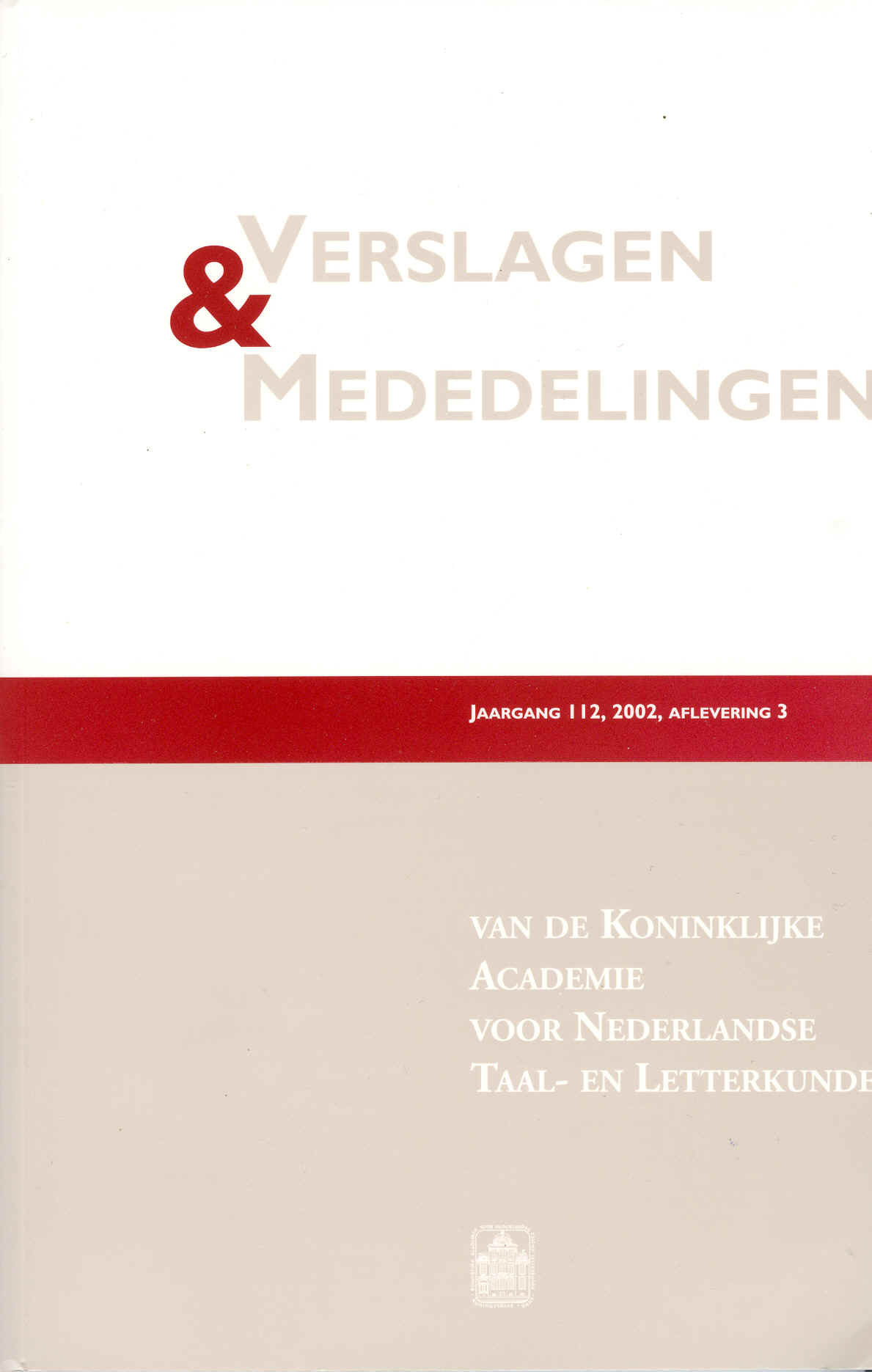|
Review of
Willemyns, Roland (ed.). 2002.
De taal in Vlaanderen in de 19de eeuw.
Historisch-sociolinguistische onderzoekingen. Gent: Koninklijke
Academie voor Nederlandse Taal- en Letterkunde (Verslagen & Mededelingen
van de Koninklijke Academie voor Nederlandse Taal- en Letterkunde 112/3.
371-603).
(Published 2003. HSL/SHL 3)

The volume
comprises nine articles, which offer various points of view on the
linguistic situation in Flanders during the nineteenth century. In
“‘Liever Hollandsch dan Fransch’: taalcontact en taalconflict in het
negentiende-eeuwse Vlaanderen”, Roland Willemyns sketches the situation
of language contact and language conflict in nineteenth-century
Flanders. This conflict is not restricted to the opposing Dutch and
French languages in the area, but it also includes the debate between
what might be called particularists, those who aim at a southern variety
of Dutch as a separate standard, and integrationists, who prefer
northern Dutch as a joint standard language. Willemyns’ contribution
provides a general framework for the research topics discussed in the
rest of the book. These topics vary from education and language planning
activities to analyses of syntactic and lexical phenomena in
nineteenth-century texts.
The teaching of
the Dutch mother tongue in Flemish primary schools is explored by Henk
van Daele, who in “Leesonderricht in de Vlaamse lagere school”
concentrates on contemporary reading instruction, examining the
influence of the modern, early nineteenth-century Dutch reading method
-
based on sounds rather than spelling
-
in Flanders. Jetje de Groof’s article “Een methodologische zoektocht
naar de impact van taalplanning en taalpolitiek in Vlaanderen in de
lange negentiende eeuw (1795-1914)”
reports on her search for a methodology to draw up an inventory of
language planning initiatives in order to interpret and evaluate them.
In her exploratory effort, she distinguishes, among other things,
various types of planning (status planning, corpus planning, acquisition
planning and prestige planning) and domains (e.g. education,
administration, jurisdiction, scholarship and science).
The language of nineteenth-century local administration
is the subject of Eline Vanhecke’s “Een eeuw ambtelijk taalgebruik:
taal, spelling en woordenschat in de verslagen van het Willebroekse
Schepencollege (1818-1900)”. In this
contribution the Willebroek material is examined for its choice of
language and for its orthography and lexis.
Comparing
Netherlandic Dutch and Belgian Dutch vocabulary (in particular the
onomasiological variation for the concepts “butcher” (vleeshouwer,
slager, beenhouwer, slachter) and “neighbour” (buur, gebuur)),
Dirk Geeraerts argues that the nineteenth century is a crucial period in
the evolution towards the present-day situation (“De 19de eeuw als
lexicale breuklijn”). In Timothy Colleman’s article (“De benefactieve
dubbelobject-constructie in het 19de-eeuws Nederlands”), the benefactive
double object construction, which is allowed by only a few verbs (e.g.
inschenken “‘to pour”) in modern standard Dutch, is shown to be
more productive in both Netherlandic and Belgian Dutch of the nineteenth
century (moeder koopt haar dochter een nieuw kleed,
“mother buys her daughter a new dress”). The history of linguistic norms
plays an important role in J.M. van der Horst’s study of a Belgian
syntactical phenomenon: the pervasion in the verbal end group (dat is
iets waar we moeten aan denken, “‘that is something we should think
of”; cf. the Netherlandic Dutch variant … aan moeten denken), a
phenomenon which has been rejected in normative grammars.
Two foreign
contributions offer some insight into the writing skills of members of
the labouring classes in nineteenth-century Great Britain and Germany
respectively. In “riting these fu lines: English overseers’
correspondence, 1800-1835”, Tony Fairman concludes that members of the
labouring classes do not seem to have tried to write schooled English on
any linguistic level except that of spelling and that, apart from some
local features, they did not write dialect either.
In “Van ‘Arbeitersprache’ naar ‘Bildungsstil’. Het
Duitse onderzoek naar sociale stratificatie in de 19de eeuw”,
Wim Vandenbussche discusses core publications on the social
stratification of nineteenth-century German.
The German results have inspired similar sociohistorical research in
Flanders.
My survey will
have shown the variety of topics that the volume offers in its
contributions, with the nineteenth century as its central element.
Moreover, it has become clear that the articles deal with research in
varying stages of progress. All this could easily give the reader the
impression of having made a lucky dip, which the book indeed in some
respects aims to provide. However, readers who select articles to their
liking will become familiar with the interesting, still largely
unexplored field of the nineteenth-century linguistic situation in
Flanders. To stimulate research in this field has been both the editor’s
intention and the aim of the Koninklijke Academie voor Nederlandse Taal-
en Letterkunde, which now regards this field as one of its main research
interests.
Marijke J. van der
Wal, Centre for
Linguistics (ULCL)/Department of Dutch,
University of Leiden, The Netherlands (contact
the reviewer).
|